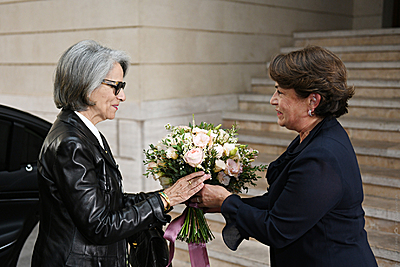Press releases
Sheikha Hussah Sabah al-Salem al-Sabah, the Director of Kuwait Museum of Islamic Art has arrived to Armenia at the invitation of the spouse of the President of Armenia Mrs. Nouneh Sarkissian
Sheikha Hussah Sabah al-Salem al-Sabah, the General Director of Kuwait Museum of Islamic Art (DAI) and co-owner of the al-Sahab collection has arrived to Armenia at the invitation of Mrs. Nouneh Sarkissian.
In the framework of her familiarization visit Sheikha Hussah Sabah al-Salem al-Sabah will visit a number of remarkable sites and cultural establishments, including the Mesrop Mashtots Scientific and Research Institute of Ancient Manuscripts, the Kafesjian Art Center, National Gallery of Armenia and Museum of History, and will learn about the historical and cultural heritage of our nation. Discussed will be also the possibilities of demonstrating some of the exhibits of the al-Sahab collection in Yerevan.
The al-Sahab collection comprises precious pieces of art, including exclusive manuscripts, carpets, valued jewelry, works of ceramics and metal, wood and glass. Over 30.000 pieces of the collection present the art and culture of different countries and belong to different geographical and time periods.
Sheikha Hussah Sabah al-Salem al-Sabah is regularly lecturing at the universities and cultural establishments in the Middle East, Europe, and US on the issues related to the Islamic culture and arts. She is also actively engaged in the preservation of architectural memorials and works in particular on the preservation and restoration of the historic structures in Bahrain, Syria, and Egypt.
The DAI museum of Kuwait is based on the collection of Sheikh Nasser Sabah Al-Ahmad Al-Sahab and his wife the Sheikha Hussah Sabah al-Salem al-Sabah. The main directions of the DAI activities are delivering of lectures, organization of a series of concerts and forums, exhibitions and trainings, research, and book publishing. The DAI also has two libraries one of which presents a rich collection of the books on the Islamic culture and arts while the other is a depository of unique books. The books from this collection currently are being digitalized and thus are becoming available to the scholars and a wider circle of interested individuals.
